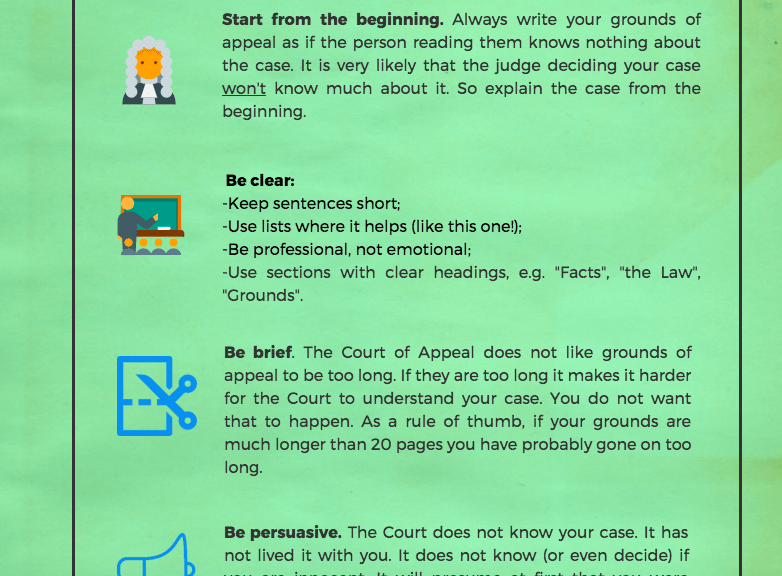This might be the most important fact sheet for people making an application for leave to appeal “in person” (without a lawyer). It should also be useful to students working at miscarriage of justice projects. Most of the hints and tips will also be relevant when making applications to the Criminal Cases Review Commission (CCRC).
Why are the Grounds of Appeal Important?
Your grounds of appeal are a massively important part of your case. If you prepare your grounds of appeal badly then the judge (or the CCRC) will not know what your arguments are. This puts you at a disadvantage. The judge will be less likely to grant you permission to appeal if you have not told them why you have a good case. So persuade them.
The Golden Rules
1) Start from the beginning. Always write your grounds of appeal as if the person reading them knows nothing about your case. It is very likely that the judge won’t know much about it anyway. So explain your case from the very beginning.
2) Make sure that your grounds are: (a) as clear as possible, (b) as brief as possible, and (c) as persuasive as possible.
(a) Be clear. The Plain English Guide includes a number of helpful tips. For example:
- Keep sentences short (usually 15-20 words);
- Use lists where it helps (like this one!);
- Be professional, not emotional.
(b) Be brief. The Court of Appeal does not like grounds of appeal to be too long. If they are too long it makes it harder for the Court to understand your case. You do not want that to happen. In a conviction appeal your grounds might be no more than 10-15 pages. As a rule of thumb, if your grounds are much longer than 20 pages you have probably gone on too long.
(c) Be persuasive. The Court does not know your case. It has not lived it with you. It is not there to decide if you are innocent. It is there to decide if your conviction should be “quashed”. It will assume that you were rightly convicted. Your job is to persuade it that you weren’t. Make your best points loudly, but without emotion. If you are emotional it will get in the way of your arguments. Do not use capital letters. Ever.
A good example: “My case is that the judge’s direction was wrong in law and so I was wrongly convicted.”
A bad example: “The judge messed up the law and misled the jury. It was a STITCH UP! I am innocent”.
Style
You can write your grounds in whatever style you like. I often choose to do it under these headings:
- Summary
- The Facts
- The Law
- Grounds of Appeal
Use whatever headings you like, but do make sure that you use headings. This helps the reader (the judge) to know when you are moving on to a new topic. It will also help you organise your thoughts as you write your grounds.
Summary of the Application
This is your chance to introduce your case. Where were you convicted? Who was the judge? What were the offences? What are the grounds that you will be relying on? (you can develop these later on).
It could look something like this:
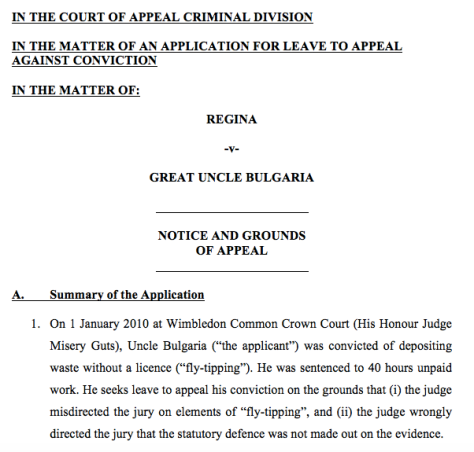
The Facts
This section must be balanced. That means explaining the case against you as well as the case for you. Of course you will be putting your own spin on the evidence, and there is nothing wrong with that. But the judge cannot understand the case for you without understanding the case against you. And if s/he thinks that you are trying to avoid the evidence it won’t help you.
You will want to cover at least the following areas: (i) what was the prosecution case? (ii) who were the prosecution witnesses and what did they say? (iii) what was the defence case? (iv) who were the defence witnesses, and what did they say?, (v) How did the judge direct the jury?
You should not repeat everything that the witnesses said. A summary will do. Perhaps a few paragraphs about what the complainant said, and one or two paragraphs about the rest.
Where you can “marry up” an allegation with the indictment then do so. For example: “Miss C said that the applicant touched her under her clothes in the bedroom (count 3)”.
Do not start making “submissions” (argument) at this stage. There is time and space for that later on.
Your summary of the facts might look like this:
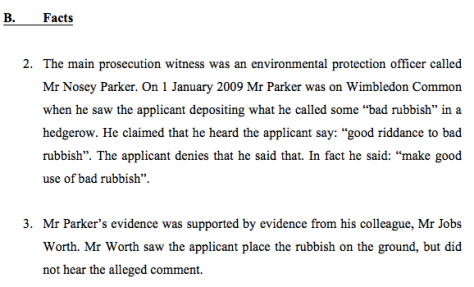
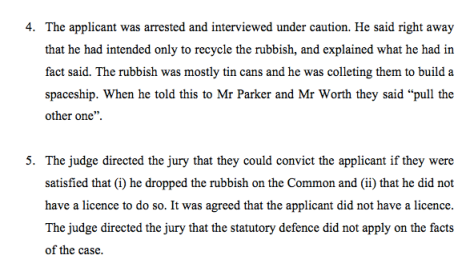
The Law
If you are appearing “in person” you are not expected to say anything about the law. You could ignore it entirely and nobody would criticise you. But if you are able to get legal advice, or to do some research of your own, this will help you to set out the legal context of your arguments.
For example: in a “joint enterprise” case you might want to include a short summary of what was said in Jogee and in Johnson because they are the “leading” (important) cases on that issue.
This section might look something like this:
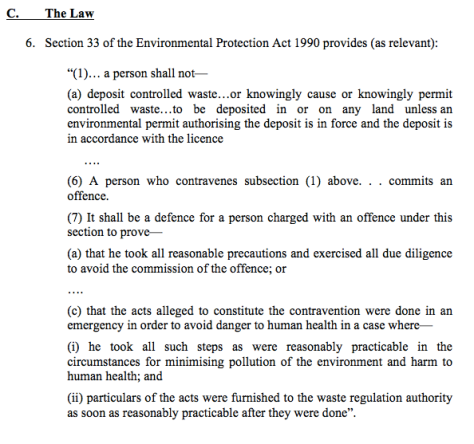
Grounds
This section is very important. But you have already laid the groundwork so by now the judge should have a good idea of what your arguments will be. You have said in section A what your grounds will be. In section B you have explained the facts. In section C you have set out the law. This is your opportunity to hammer home your arguments by piecing together the jigsaw.
Remember: keep it brief. A few paragraphs for each ground of appeal is usually plenty. Sometime a single paragraph might be enough. Your arguments won’t benefit from repetition. A good point can often be explained quite briefly. Do not “over egg” it. If the judge was wrong, the judge was wrong. There is no need to say that s/he was “hopelessly wrong”, “plainly wrong”, or “obviously wrong”. Wrong is wrong, and adverbs won’t help you.
Your grounds might look like this:
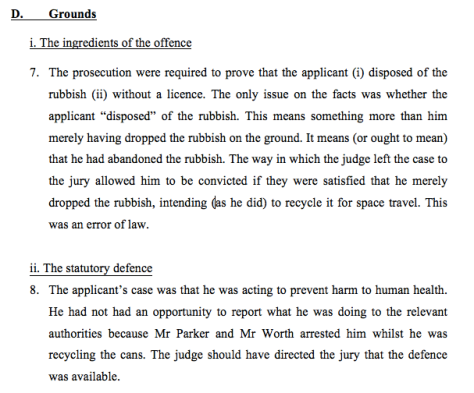
To Recap:
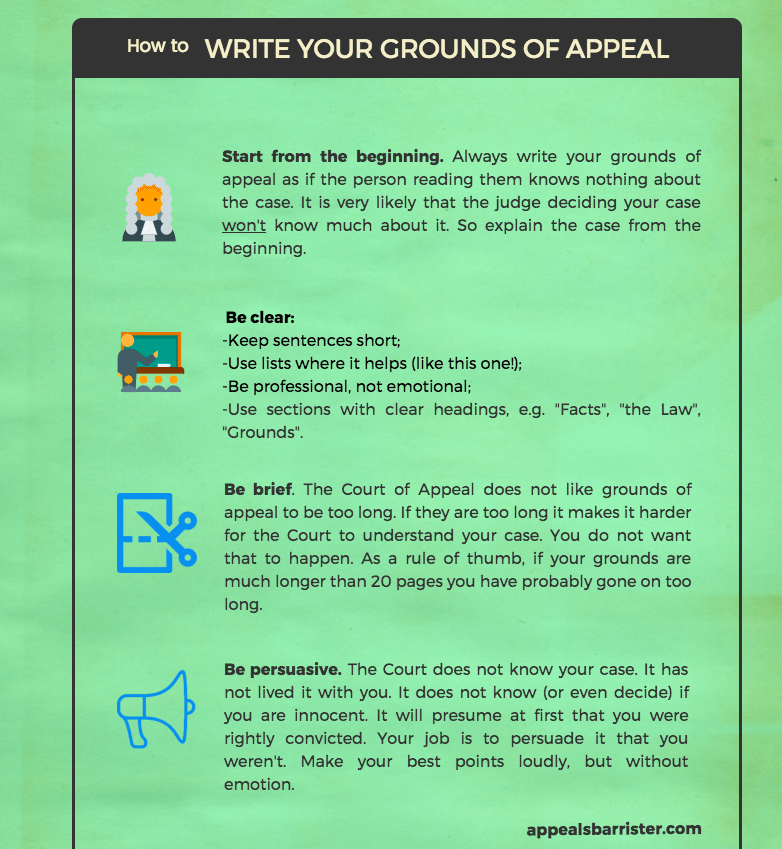
Postscript: Uncle Bulgaria’s conviction was quashed. Mr Parker and Mr Worth are currently on desk duties.
© Appeals Barrister
